Check out some of our favorite birdwatching destinations in Europe!
[Updated April 2020]
This post contains affiliate links for which Expedition Wildlife may receive a commission (where applicable) at no additional cost to you.
Europe offers breathtaking landscapes for optimal birdwatching opportunities!
Having initially learned birds in the United States, learning tons of new birds in Europe was thrilling. After living in Germany for three years, I’ve gotten the hang of identifying the local species. And, I have a penchant for seeking out the next incredible birdwatching destination to learn even more birds!
Europe’s birdlife is as varied as the cultures found there. It is my hope that in your future trips you will consider visiting and contributing to these incredible places.
Let’s jet off to Europe in search of birds and landscapes of which you could only dream!
READ NEXT | Best Places to Watch Wildlife Around the World
Falsterbo Bird Observatory, Sweden: Top birdwatching destination for Fall migration
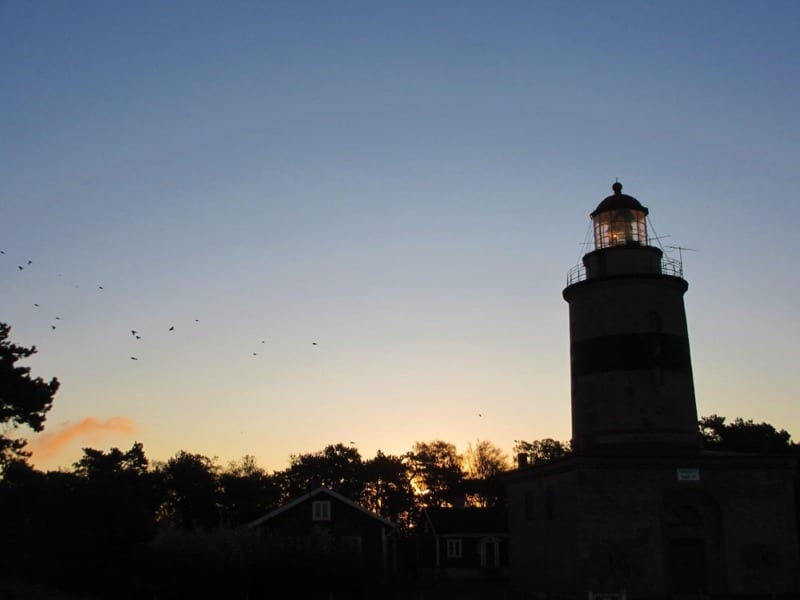
The Falsterbo Bird Observatory is located at the Falsterbo Lighthouse. Hundreds to thousands of birds can be seen in a day during migration season. Photo by Christa Rolls
About an hour from Copenhagen Airport, you’ll find yourself in the rural and serene environment of Falsterbo, Sweden.
Hugged by the Baltic Sea and the Oresund Sound, this peninsula funnels birds straight past during migration season, providing some incredible birding opportunities.
In fall, you may see thousands of birds stop over the lighthouse and nearby marshes on their journey south.
Buzzards abound, and passerines such as the Blue Tit and Bearded Reedling move in flocks, creating ever the spectacle.
The Falsterbo Bird Observatory will host guided walks during various times of the year. Book far enough ahead of time to get accommodation in their shared biologist bunkhouses for a very reasonable price.
Read more about visiting Falsterbo, and find out why it’s the best place to birdwatch during fall migration!
Ornithological Park Pont de Gau, Camargue, France: Best place to see Flamingos in Europe
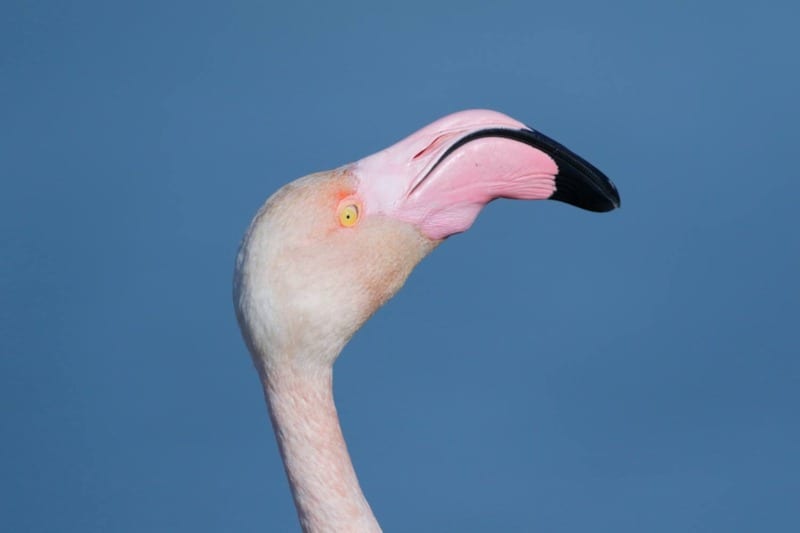
Greater Flamingos are seen throughout the year in the Camargue. Especially during spring and summer, they flock together during the breeding season. Photo by Nathan Rolls
Home to thousands of flamingos and other wading birds, the Camargue is an incredible wonder in the birding world.
The region is made up of agricultural fields and marshy waterways ideal for these wading birds to thrive.
The Ornithological Park Pont de Gau guarantees a great show of birds. And, you end up getting fairly close to the birds while walking along their designated pathways.
Flamingos flock back to the area in force in springtime in preparation for breeding. Heron and egret rookeries begin to fill with the sounds of territorial mates. You may even see displaced spectacles, such as the Sacred Ibis!
To see birds and other wildlife in the rest of the Camargue region, you can also take a guided tour of the region.
Check out our video of the Camargue to experience what we saw on our trip! For more information on visiting the Camargue, read our “Best of” Camargue post!
Doñana National Park, Spain: Top place to see Spring migration wading birds
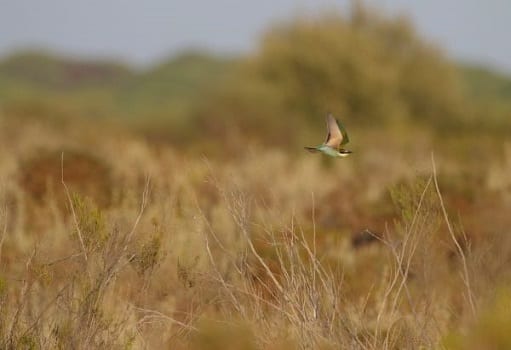
Beautiful scrub land and marshy waterways yield many different kinds of birds, even during the height of summer. Photo by Nathan Rolls
Doñana National Park is a UNESCO World Heritage Site, and for good reason.
It boasts one of the largest heron rookeries in the Mediterranean and hosts hundreds of thousands of waterfowl each year.
The visitor’s center just south of El Rocio has trails looping through the forest, leading out to blinds to watch the birds that roost and fly in throughout the day.
Even driving along the road at dusk can yield an awesome spectacle. Flitting above the mesquite, hundreds of Bee-eaters will emerge to feast on bugs in the evening light. This is also where you’ll find the majority of flamingos and other wading birds.
The main part of the Park is only accessible by approved tours, so be sure to book yours ahead of time! Check out this one leaving from Seville.
Tip: check the dates of the El Rocio Pilgrimage, which takes place the second day of Pentecost every year. During the pilgrimage, around one million people converge on the small village to honor the 13th century statue of the Virgin Del Rocio.
Skomer Island, Wales: Best place to see Atlantic Puffins and Manx Shearwaters
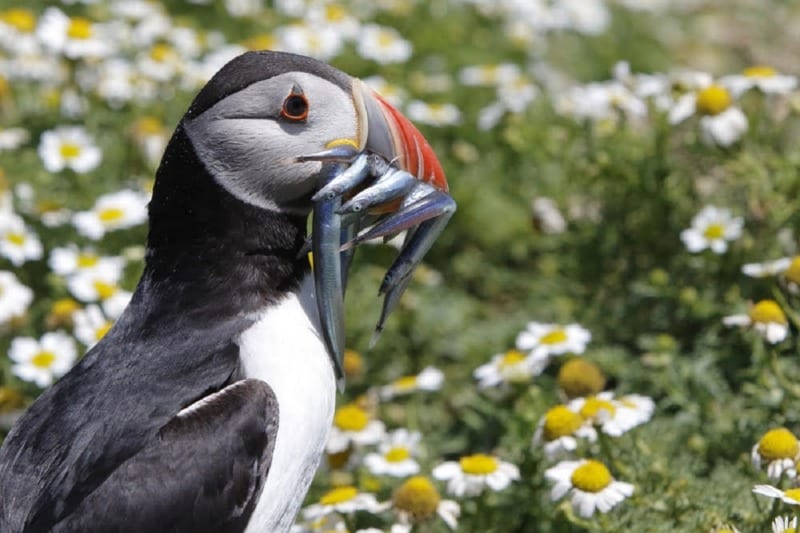
Atlantic Puffins breed on Skomer Island and have successful broods due to the ample numbers of sea eels to feed to young. Photo by Nathan Rolls
Few places are as wholly wild-feeling and magical as Skomer Island.
From the boat dock at Lockley Lodge Visitor Center, you jet off on your thirty minute ride to this bird island oasis. Along the way, more and more birds come into view, diving into the water and soaring above your head.
For peak bird-viewing, arrive in the late spring or early summer. May and June are especially beautiful with the blooming of wildflowers!
Thousands of Manx Shearwaters, Guillemots, and Kittiwakes nest on the island, as well as the much-loved Atlantic Puffin! Try not to trip over the dubbed “clowns” of the bird world as they walk and fly into their burrows to feed young. Please be sure to keep hands, feet, tripods, backpacks, you name it, on the trail at all times!
If you book well ahead of time, you may have the incredible opportunity to stay in the Island’s lodge after the rest of the visitors have left for the day.
Read more about visiting and birdwatching on Skomer Island here
Mykines, Faroe Islands: Most unique place to see a variety of sea birds
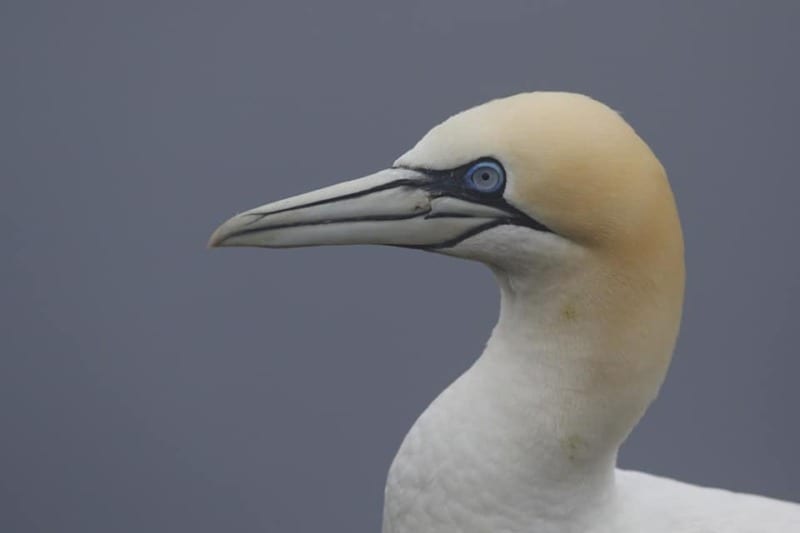
Gannets, and many other sea birds, nest on the rocky cliffs found on Mykines in the Faroes. Note the misty background, a common occurrence throughout the Islands! Photo by Nathan Rolls
Imagine: a place windswept, with an intense, rugged coastline, and grass-roofed homes dotting villages on a remote set of islands.
This, in an insufficient way, describes the Faroe Islands.
Its people have a kinship to nature here, and rightfully so, as the weather is a constant consideration at 62° North latitude. This is the perfect stopover site for hundreds of bird species and an ideal breeding location for thousands of seabirds.
The island of Mykines hosts thousands of Puffins, Kittiwakes, and Gannets, among others, during breeding season in the summer months. Special regulations advise visitors obtain a local guide to tour through the breeding areas. This helps eliminate the impact to bird colonies as much as possible. More information on providers can be found through the Visit Faroe Islands webpage.
As if Mykines doesn’t have enough bird-loving goodness, take the ferry to Nólsoy for an unforgettable, nighttime bird tour to experience one of the largest European Storm Petrel colonies in the world.
Our video from our trip to the Faroe Islands or our Faroes Trip Guide might inspire you to book your trip sooner rather than later!
Monfrague National Park, Spain: Best raptor birdwatching
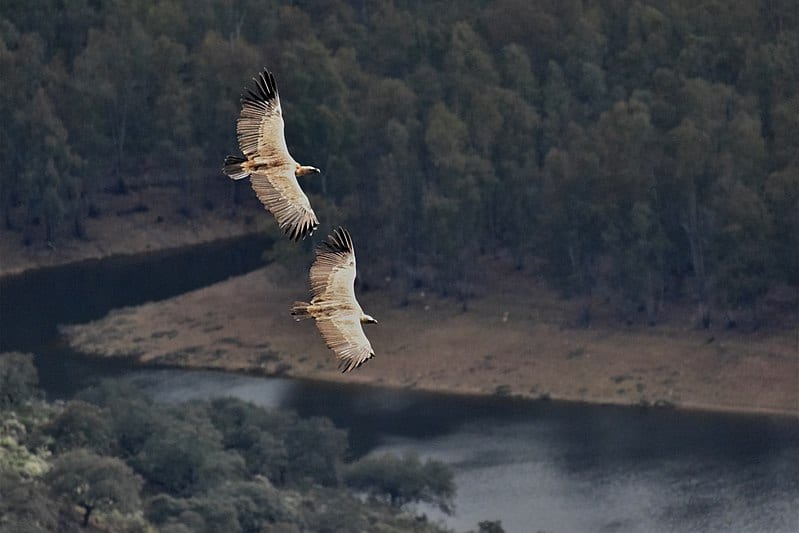
If your birdwatching aim is to spot raptors and other birds of prey, Monfrague National Park is the place for you.
The landscape is comprised of distinct Mediterranean scrub bushes, and the rocky outcroppings that form this Biosphere Reserve’s mountains and valleys have been shaped overtime by the Caceres River. This habitat is ideal for the numerous vultures, buzzards, and eagles that reside here.
Most especially, the Black Vulture, Egyptian Vulture, and Griffon Vulture can all be found throughout the Park. The population of Black Storks is also thriving, as the river creates optimal wading habitat while the outcroppings create ideal nesting perches.
As you drive through the Park, stop at the overlooks to sit with your binoculars or scope in search of birds. To get a more extensive view of the Park, be sure to book a tour through their visitor’s center.
Dunes of Texel National Park, The Netherlands: Top breeding bird site for wading birds
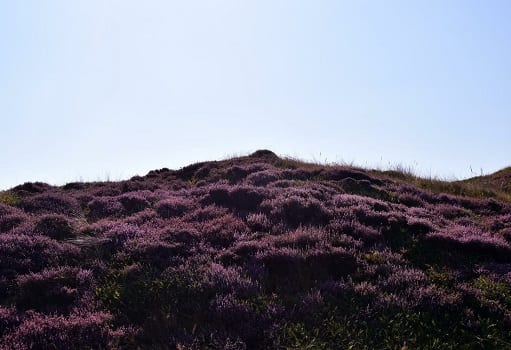
Dunes covered in purple heather can be seen throughout the island of Texel, setting the perfect backdrop for your birdwatching adventure! Photo by Karen from WanderlustingK
In springtime, the sand dunes surrounding the island of Texel (pronounced “Tessel”) are covered in vibrant, purple Heather plants. This sets the stage for all manner of birds to migrate back to this island oasis for breeding season!
Once the ferry drops you off at the docks, consider biking around the area to really get a feel for its natural beauty. Trails looping through Dunes of Texel National Park pass by bird observatories and blinds to give you a better, uninterrupted view of the incredible bird life. You’ll spot terns, eiders, all manner of shorebirds, and one of the largest Spoonbill colonies in Europe!
Birdwatching tours are regularly organized in the area, so consider stopping by the Bird Information Center for timing and other birding information.
To really soak in all Texel has to offer, stay in the island village overnight. At the very least, grab a coffee or locally-brewed Texel beer before taking the ferry back to the mainland.
Cairngorms National Park, Scotland: Best place to birdwatch in a varied forest and montane habitat
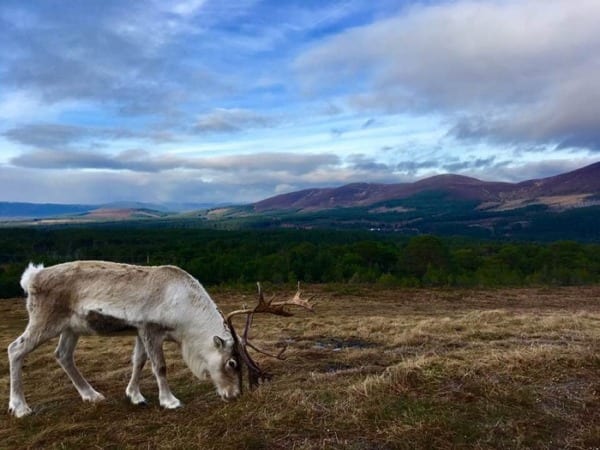
The views and vistas throughout the Scottish Highlands are stunning, and this view from Cairngorm Mountain is no exception. Photo by Christa Rolls
At over 4,500 square kilometers, Cairngorms National Park is a large, naturally diverse Park in the northeast of Scotland. It hosts many species of birds, including Capercaillie, Red Grouse, Ptarmigan, and Snow Bunting.
The many types of habitats to explore include forests, farmland, mountains, lochs, and moors, each of which has unique bird life to appreciate.
Using Aviemore as a base, explore Glenmore Forest Park and Abernethy forest’s incredible bird diversity and viewing opportunities along loch-sides and babbling brooks. Follow the mountain road from town toward Cairngorm Mountain to visit Britain’s only free-roaming herd of reindeer at the Cairngorm Reindeer Centre. Once at the mountain ski base even further up the road, hike up the easternmost trail in search of Ptarmigans and hares. Ptarmigans are especially fun to see in their white winter plumage!
Read our 9-day tour of Scotland’s Highlands, including the best places to see wildlife along the way!
Akrotiri Marsh and Peninsula, Cyprus: Top spot for Spring and Fall migration birdwatching
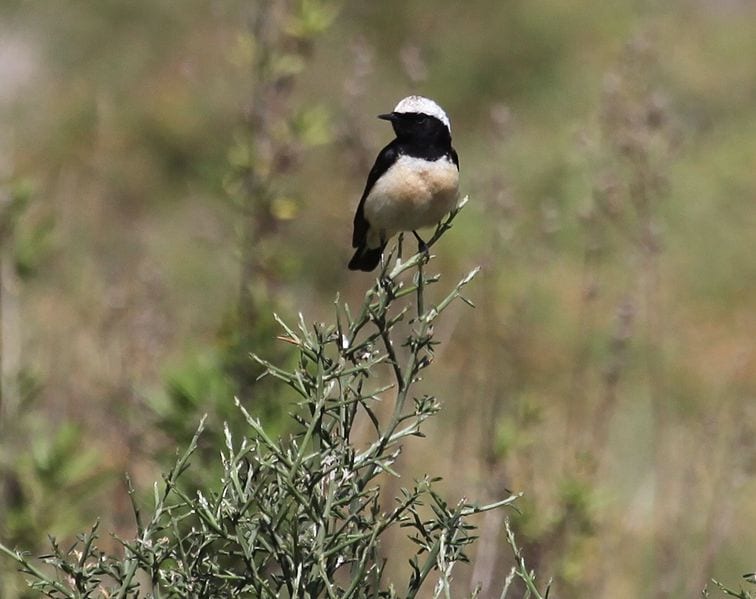
Situated on a major migration route, the Akrotiri Marsh and Peninsula is an incredible spot to visit for great birdwatching opportunities. During spring and fall, spot songbirds and raptors in great numbers.
The proximity of the Limassol Salt Lake to the coastline draws in shorebirds, wading birds, and seabirds of all varieties.
Cyprus has a handful of endemic species, those that breed nowhere else in the world, including the Cyprus Wheatear and Cyprus Warbler!
Breeding time in the summer, however, can be incredibly hot this far south, so plan to go out early in the morning or later in the evening for birdwatching.
BirdLife Cyprus offers birdwatching field trips throughout much of the year, aside from those scorching summer months. Their wealth of information about the island and its bird life is an invaluable resource during your visit!
For experiencing different species and habitats, head inland to the Paphos Forest Nature Preserve.
Srebarna Biosphere Reserve, Bulgaria: Best place to see Dalmatian Pelican in Europe
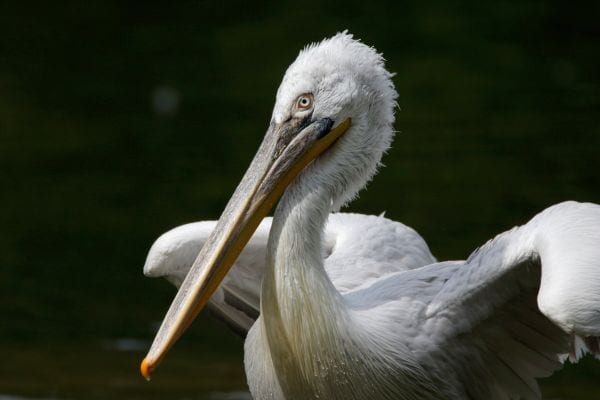
Dalmatian Pelicans aren’t incredibly common, so seeing these large, prehistoric-looking birds in flocks is an exciting sight! Photo by Nathan Rolls
Situated on the mighty Danube River at the border between Bulgaria and Romania sits a marshy sanctuary for birds during all times of year.
The Srebarna Biosphere Reserve is a UNESCO World Heritage Site due to its abundant bird life and important bird habitat. The area serves as a refuge for migrating birds, overwintering birds, and large breeding colonies.
About 10% of the Mediterranean population of Dalmatian Pelicans breeds here. Seeing about 120 pairs of these magnificent creatures in one place is a sight to behold!
The extensive trail system throughout the Reserve allows you to explore the unique habitat offered here.
If time permits, a few hour’s drive away is the Central Balkan National Park, the furthest east extension of the mountain range. The Park hosts over 120 breeding birds and serves as an Important Bird Area. These are definitely sites you don’t want to miss!
Norfolk Wildlife Trust Cley Marshes, England: Top place to go birdwatching year-round
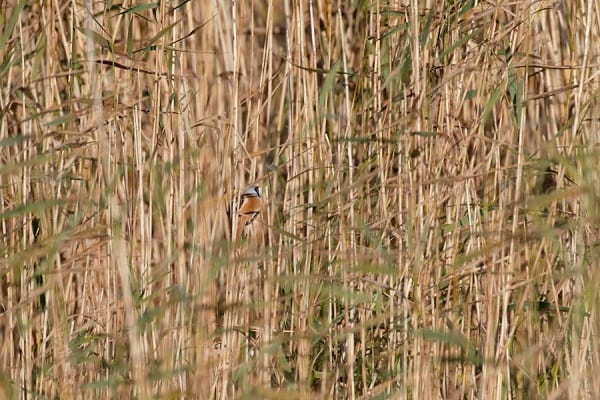
Bearded Reedlings blend in well with their namesake habitat, reed marshes. These beautiful birds are just one of the many seen at Cley Marshes. Photo by Nathan Rolls
The United Kingdom has a wide array of species to watch and enjoy at all times of the year, and the marshes of England are no exception.
Norfolk Wildlife Trust’s Cley Marshes has recorded over 300 birds throughout the year. Wading birds such as avocets visit in the springtime and various seabirds and waterfowl such as Brent Geese in the wintertime. Harriers and Bearded Reedlings love the salt marshes and mudflats that comprise a large portion of the region’s habitat and can be seen throughout the year.
Enjoy a coffee break at the visitor’s center café while overlooking the marshes and sea.
If you’re visiting in the winter, nearby Blakeney National Nature Reserve has incredible opportunities to spot grey seals with their pups!
Lake Kerkini, Greece: Top place for springtime birdwatching
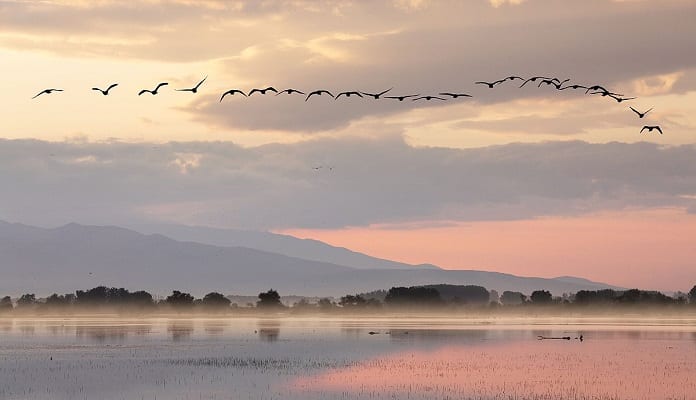
Lake Kerkini sits at a beautiful spot in Northern Greece, just near the Kerkini and Marvovouni Mountains. Photo by Huguet Pierre
Greece may be well-known for their ancient ruins and clear, turquoise water, but for bird lovers, Lake Kerkini is a must-visit destination. It has been called one of the most beautiful lakes in the country, boasting more than 300 species.
Springtime is the best time of year to visit, as birds are moving through as well as emerging into their breeding plumage… and it’s not yet too hot or peak tourist season!
Rarities such as the Dalmatian Pelican and Pygmy Cormorant make their homes here, along with many other wading and waterbirds. Look into renting a canoe or booking a boat ride around the Lake, or walk or bike the surrounding trails.
Make this stunning location, at the base of the Kerkini and Marvovouni Mountains (which offer even more birding opportunities), your day trip excursion from nearby Thessaloniki.
Quick Note: Wildlife and habitat safety is of the upmost importance to us. When visiting any natural place, please be respectful of the distance from which you get to animals and practice Leave No Trace ethics. If the behavior of the animal changes because of your presence, you are too close! Be sure to read our Birding Ethics blog before heading out on your next trip.
Happy Birding!
Christa and Nathan
P.S. Join our Facebook community to follow our wildlife destination travels, gear reviews, and photography tips!
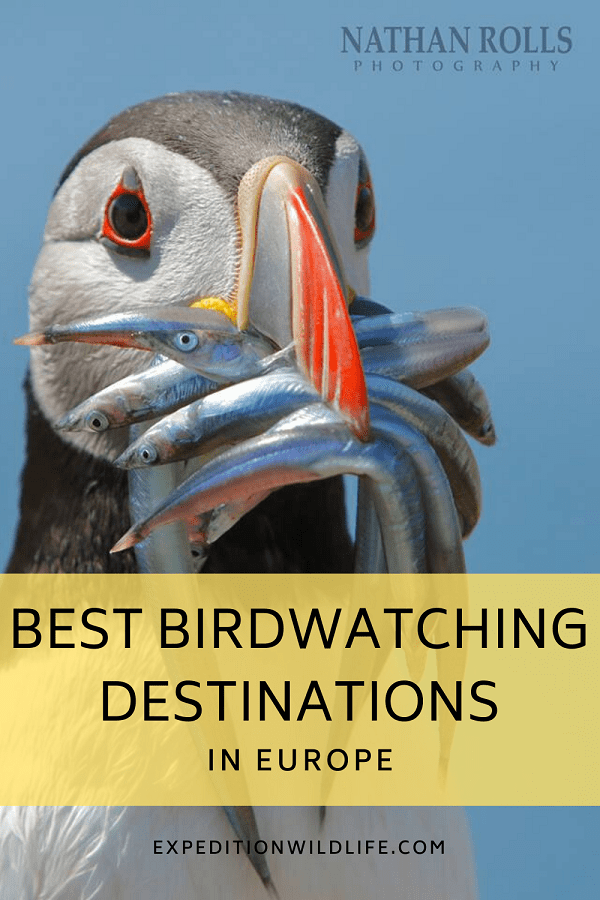

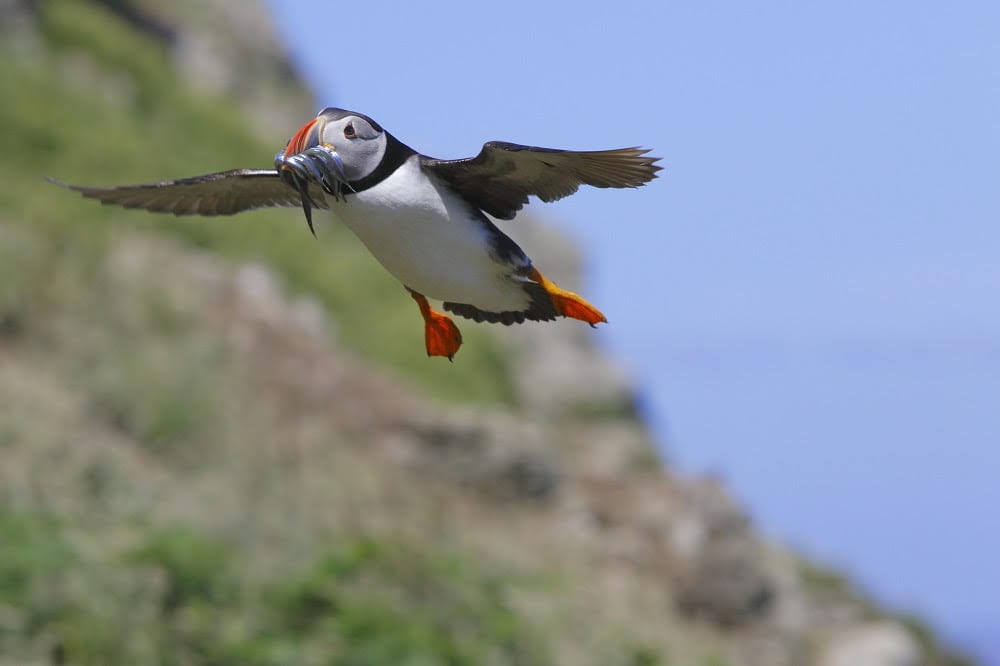
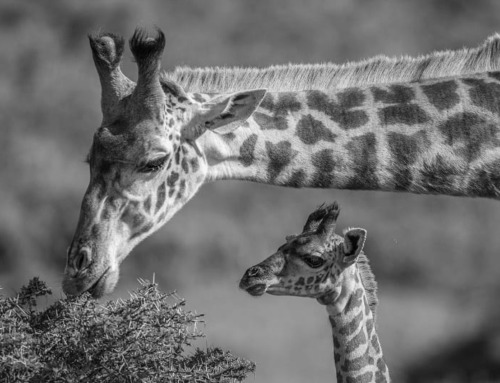

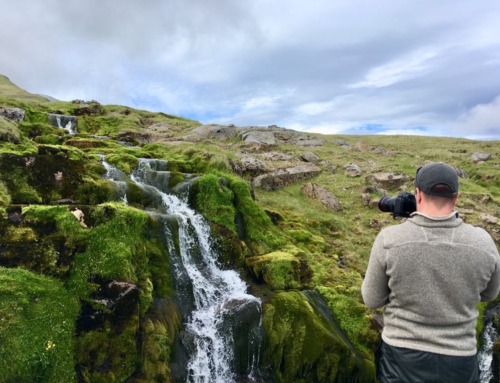
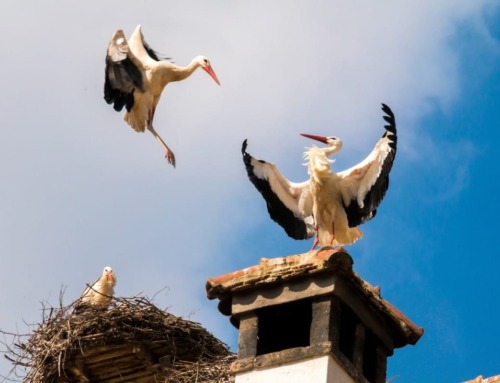


Leave A Comment